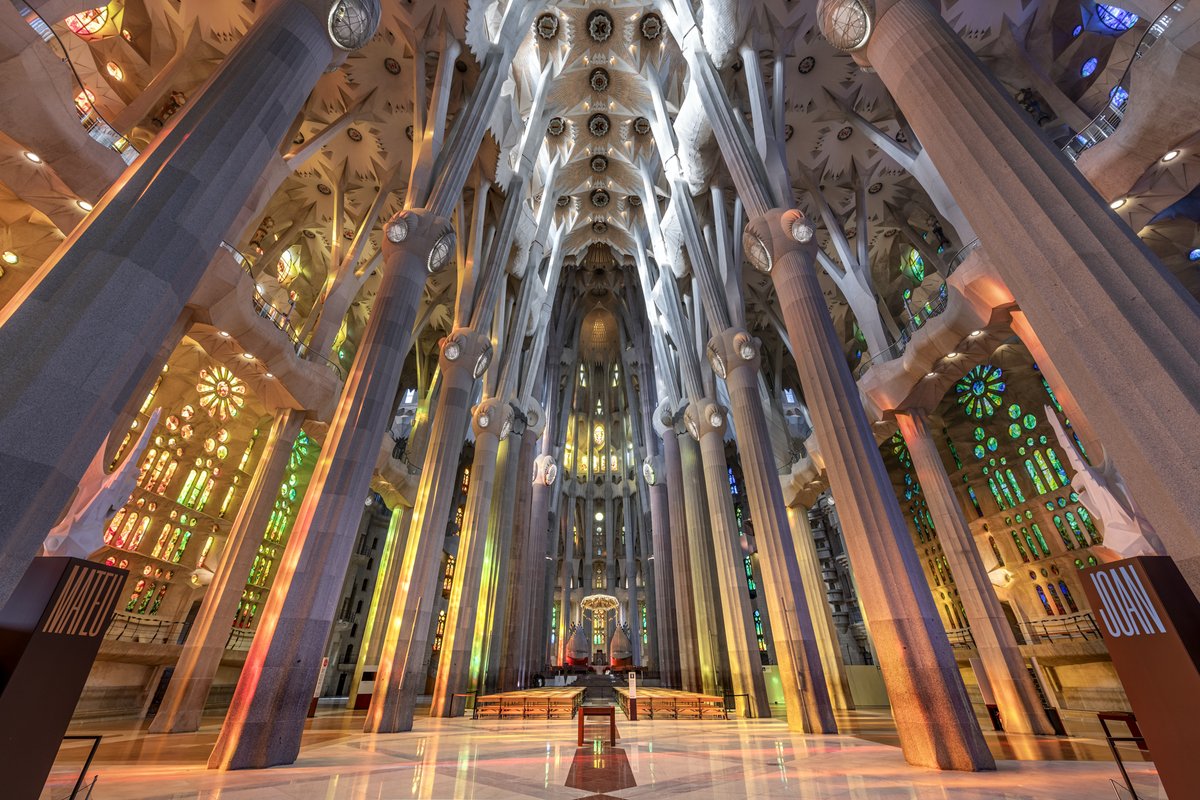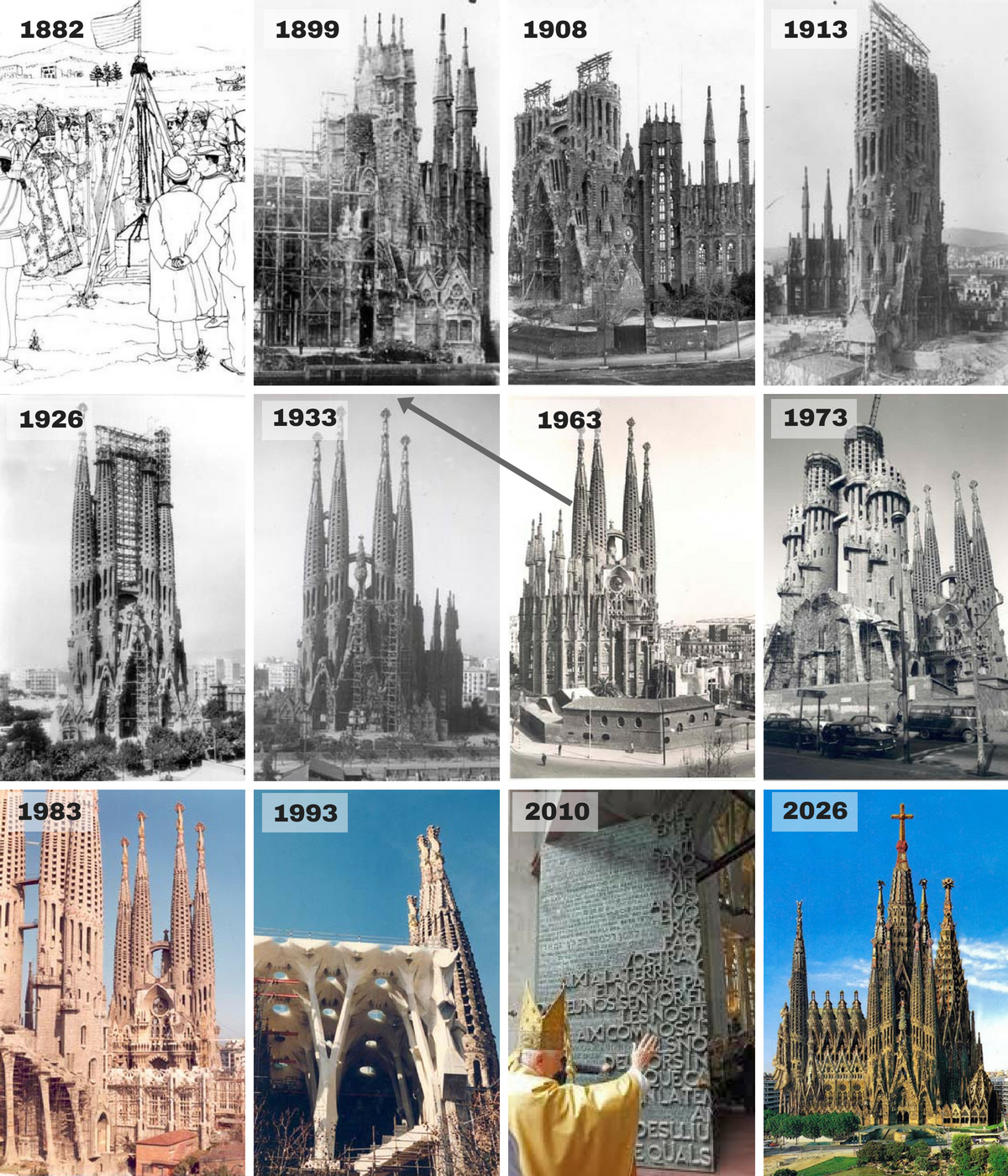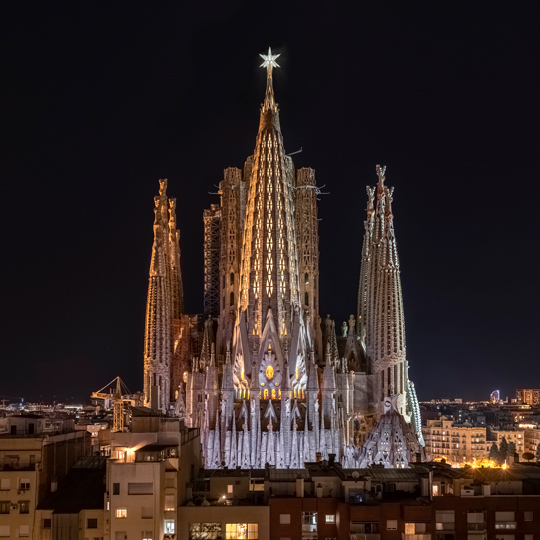Sagrada Familia: The Untold Stories Behind Gaudí’s Unfinished Masterpiece
Discover the secrets of Sagrada Familia! From Gaudí’s visionary genius to hidden symbolism and the mystery of its unfinished construction—this is the ultimate guide to Barcelona’s iconic basilica.
The Eternal Cathedral: Sagrada Familia's Unfinished Symphony
Where faith meets innovation, and architecture defies time
The Dream That Touched the Sky
Rising above Barcelona's bustling streets, the Sagrada Familia stands as a testament to human imagination—its twisting spires reaching toward heaven like stone flames frozen in time. But unlike the world's great cathedrals, this masterpiece remains unfinished after 140 years, telling a story of vision, tragedy, and relentless determination.
 The basilica's distinctive silhouette has become Barcelona's most recognizable symbol
The basilica's distinctive silhouette has become Barcelona's most recognizable symbol
From Humble Beginnings to Revolutionary Design
In 1882, what began as plans for a modest neo-Gothic church transformed into something extraordinary when Antoni Gaudí took the helm. The young Catalan architect didn't just modify the blueprint—he revolutionized it, drawing inspiration from the most unexpected source: nature itself.
Walking through the basilica today feels like entering a petrified forest. Massive columns branch out like tree trunks, supporting a canopy of geometric shapes that seem to defy gravity. Every surface tells a story, from the honeycomb-like patterns in the vaults to the spiral staircases that mirror nautilus shells.
 The interior columns branch like trees, creating a stone forest that filters natural light
The interior columns branch like trees, creating a stone forest that filters natural light
Nature's Mathematics in Stone
Gaudí's genius lay in his ability to combine natural forms with precise mathematical principles. The basilica's structure employs:
- Hyperboloid vaults that distribute weight like spiderwebs
- Helicoid spirals inspired by seashells and plant growth
- Fractal patterns found in crystalline structures
- Catenary arches that mirror nature's perfect curves
But beyond these technical marvels lies a deeper symbolism. The entire basilica serves as a three-dimensional Bible, with each facade telling a different chapter of Christianity's story.
The Three Sacred Facades
The Nativity Facade (East)
Completed during Gaudí's lifetime, this facade bursts with life. Turtles support its columns, while birds nest in the sculpted foliage. Every detail celebrates creation and birth, capturing the joy of Christ's arrival.
The Passion Facade (West)
In stark contrast, angular forms and skeletal figures depict Christ's suffering. The facade's severity is intentional—Gaudí wanted visitors to feel the weight of sacrifice and loss.
The Glory Facade (South)
Still under construction, this will be the basilica's grandest entrance, representing resurrection and eternal life. When complete, it will feature scenes from heaven, hell, and final judgment.
 The stark geometry of the Passion Facade creates a dramatic contrast with the naturalistic Nativity side
The stark geometry of the Passion Facade creates a dramatic contrast with the naturalistic Nativity side
The Tragedy That Changed Everything
Gaudí devoted four decades to his masterpiece, eventually moving into its workshop and neglecting his appearance to focus entirely on the work. Then came the fateful day in 1926 when, walking to evening prayer, he was struck by a tram. Tragically mistaken for a beggar due to his disheveled appearance, he received delayed medical attention and died three days later.
But perhaps the greatest tragedy came a decade later during the Spanish Civil War, when anarchists destroyed much of Gaudí's workshop, including his original models and plans. The future of Sagrada Familia hung by a thread.
Rising from the Ashes
Rather than abandon the project, architects and historians painstakingly reconstructed Gaudí's vision from surviving fragments and photographs. Modern technology has accelerated construction, with computer-aided design and CNC manufacturing helping realize forms that would have been impossible in Gaudí's time.
 Modern technology meets historical vision as construction continues
Modern technology meets historical vision as construction continues
A Living Monument
Today, Sagrada Familia represents something unique in architectural history—a medieval cathedral being built in the modern age. Its construction timeline spans:
- Horse-drawn carriages to electric cars
- Hand-carved stone to 3D-printed models
- Paper blueprints to virtual reality simulations
While the official completion date is now set for 2030, some argue that finishing Sagrada Familia would betray its essence. Perhaps its true beauty lies in being eternally incomplete—a reminder that some dreams are too big for a single lifetime.
Experiencing the Magic
To truly appreciate Sagrada Familia, visit during these optimal times:
- Early morning: Watch sunlight first pierce the eastern windows
- Late afternoon: Experience the western light's color symphony
- Holiday evenings: See special illuminations that transform the facade
The best views come from:
- Plaça de Gaudí: Perfect for reflection photos in the park's pond
- Carrer de Marina: Captures the full height of the Nativity Facade
- Rooftop terraces: Several nearby hotels offer unique aerial perspectives
The Legacy Continues
Sagrada Familia stands as more than a church—it's a bridge between past and future, nature and mathematics, human ambition and divine inspiration. As construction continues, each new stone honors both Gaudí's original vision and humanity's endless capacity to dream big.
The basilica reminds us that some projects transcend their creators, becoming something greater than initially imagined. In this way, Sagrada Familia's unfinished state might be its most perfect form—an eternal work in progress, just like the faith it celebrates.

Illuminated at night, Sagrada Familia takes on an otherworldly appearance
Note: While actual completion may come in 2030, Sagrada Familia has already achieved its true purpose—inspiring generations to look beyond the ordinary and reach for the divine.